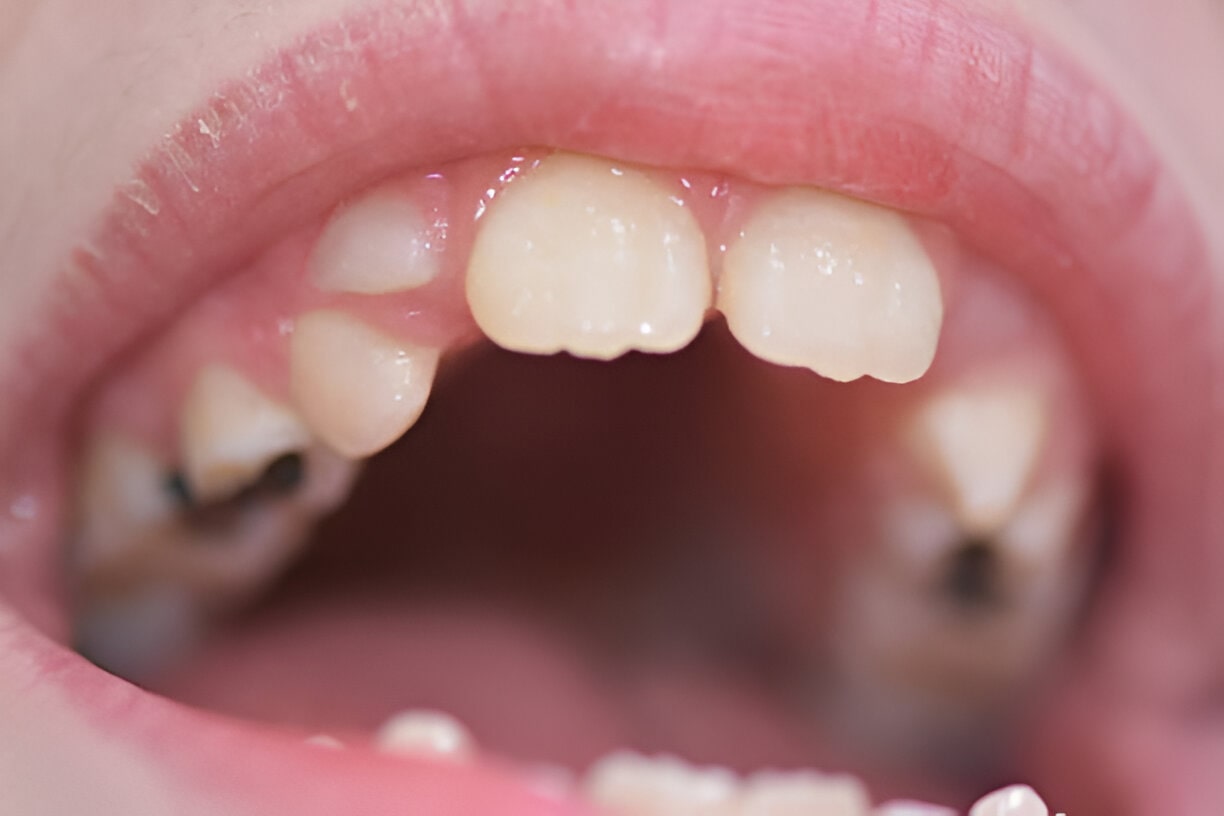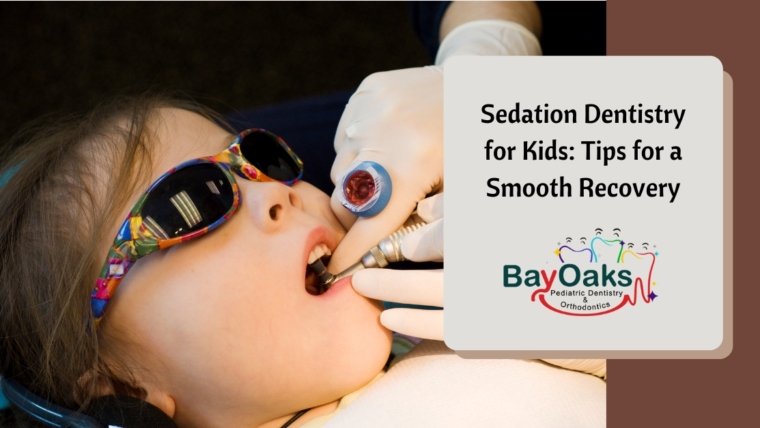
Why Cavities in Kids Are a Warning Sign — Not Just a Childhood Milestone
Why Cavities in Kids Are a Warning Sign — Not Just a Childhood Milestone
What Are Cavities, Really?
Cavities, a formal title for dental caries or tooth decay, are small battlefields. They start when the bacteria in our mouths eat the tiny bits of sugar we missed and then puff out acidic clouds.
Over weeks, that smoke worms its way through the bright, smooth surface of the enamel, carving a small furrow into the softer, more vulnerable dentin beneath.

Tooth decay in children tends to develop faster and more aggressively because their enamel is thinner and their brushing habits are still developing. Cavities can occur on baby teeth and permanent teeth, and both should be taken seriously.
The “It’s Just a Baby Tooth” Myth
- Baby teeth hold the shape that the adult ones will follow. If one drops early because of a cavity, the adult can show up tipped, twisted, or jostled by the crowd.
- Cavities don’t stay in their lane; the bacteria love a neighboring tooth and will set up shop in the first permanent one that looks appealing.
- Baby teeth can give you the same abscess, pain, and deep ache that adults complain about, and no small person should have to sit through it.
- Little holes don’t stay little, especially in kids’ mouths. The fallout can stretch to speech, chewing, and their smiles, talk, and their ability to bite without worry.
Why Cavities in Kids Are a Warning Sign
1. Poor Oral Hygiene Habits
2. High Sugar Intake
3. Irregular Dental Visits
Regular checkups help detect cavities early, sometimes before they’re even visible. If your child gets a cavity, it could be a sign that they’re not seeing the dentist often enough for dental cleanings and exams.
4. Lack of Fluoride Exposure
Think of fluoride as the castle wall around every tiny, shining tooth. When the wall is weak or missing, the moat is shallow and the dragons come sooner.
Cavities are saying that the evening toothpaste, the drinking water, or the extra office fluoride isn’t getting enough playtime on the teeth.
5. Underlying Medical Conditions
The Consequences of Ignoring Cavities
- A sharp toothache and shooting sensitivity
- A dental infection that throws a painful party
- Trouble for the teeth that are still under the gumline
- A tooth that says it’s out for good
- A picky eater and a kid who can’t settle at night
- A surprise trip to the emergency room and a bill that grows legs
Plus, that nonstop dental throb can dim your child’s smile, turn the day a little loud, pull their focus in class, and cloud their health. The sooner you step in, the lighter and cheaper the fix will feel.
Signs Your Child May Have a Cavity
Cavities don’t always knock loud at the door, especially in their first tiny stage.
Stay alert for these subtle signals:
- Your child complains of sore or tender teeth.
- They pause before biting into anything hot, cold, or sweet.
- You spot little pits or shadowy dots on their teeth.
- Bad breath lingers after brushing.
- Gums around a tooth look red or puffy.
Even without obvious signs, regular dentist visits can spot trouble before it spreads.

Prevention Is Better Than Cure: How to Protect Your Child’s Teeth
The good news is you can keep cavities at bay with a few easy daily habits. Try these:

1. Create a Consistent Oral-Care Routine
- Brush twice a day for two minutes with fluoride paste.
- Supervise brushing until your child is at least 7 or 8, making sure every side of each tooth gets a good scrub.
- Floss between all back teeth every day; that’s where decay loves to hide.
- Use a cheerful two-minute timer, or brush to a favorite song, so it feels like playtime.
2. Cut Back on Sugary Treats and Drinks
- Replace juice and soda with plain water at mealtimes and between so teeth get a break.
- Keep small fruits, string cheese, or carrot sticks close by for quick snacks.
- Avoid sticky candies or gummies that hang on to teeth.
- Save sweets for mealtimes when saliva can wash them away.
3. Schedule Regular Dental Checkups
- Take a trip to the dentist every 6 months for a gentle polish and a quick look.
- Ask for a fluoride rinse or sealants that cover the grooves and guard against cavities.
- Share your child’s past cavities and keep a running list of all the ways to protect those little teeth.
4. Use the Right Tools
- Choose a small, soft-bristled toothbrush that a small hand can hold and that fits comfortably in a small mouth.
- Use a fluoride toothpaste for kids that has a kid-friendly flavor, applying no more than a pea-sized dot.
- If they’re ready, an electric toothbrush can make brushing easier and a little more fun.
5. Lead by Example
Brush and floss side by side every morning and every night so clean teeth feel like a routine, not a chore..
When to Start Dental Visits
The first trip to the dentist should be by first birthday or no later than 6 months after the first tooth appears.
Getting to the dentist early lets your dentist:
- Watch how their teeth and jaws are growing and lining up.
- Apply fluoride and other treatments that keep smiles safe.
- Show parents the best ways to brush, choose snacks, and break bad habits.
- Find tiny cavities when they are easiest to fix, before they hurt
What to Do If Your Child Has a Cavity
First, stay calm. Next, follow these steps:
- Call the dentist and get the earliest appointment possible.
- Stick to the dentist’s advice, whether that means a filling, a crown, or a special treatment for the nerve.
- Figure out what led to the cavity, and how to keep that from happening again.
- Settle into a stronger daily routine for brushing, flossing, and snacks.

Fixing a cavity is about more than cleaning out the decay. It is about understanding what went wrong and changing things to keep your child’s mouth healthy for the long run.
Cavities are not innocent little slips; they are clear letters from sugary snacks, skipped toothbrushes, or checkups that came too late. But they also come dressed as chances. Chances to notice trouble young.
Opportunities to teach your child the joy of healthy choices. Opportunities to weave a future of strong, radiant smiles.
Your child’s mouth is more than a set of teeth; it is the quiet seat of comfort, the source of cheerful chatter, and the doorway to confident expression. Treat a cavity as a gentle first note of caution. Act while the note is soft, and the worry stays small; give it time, and the note can turn to a painful song.


